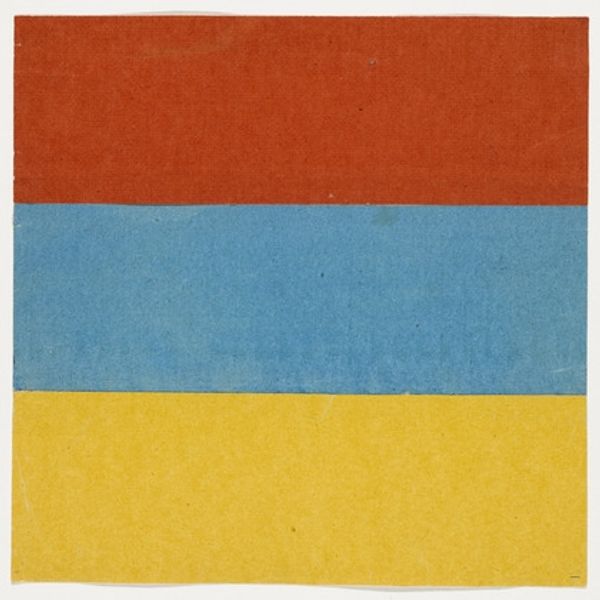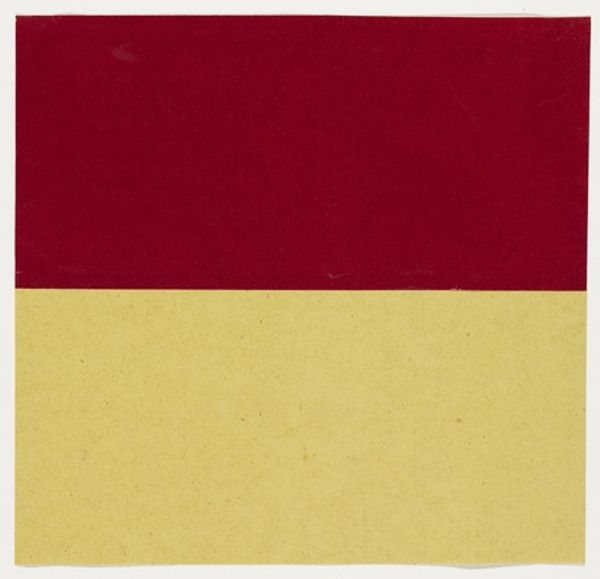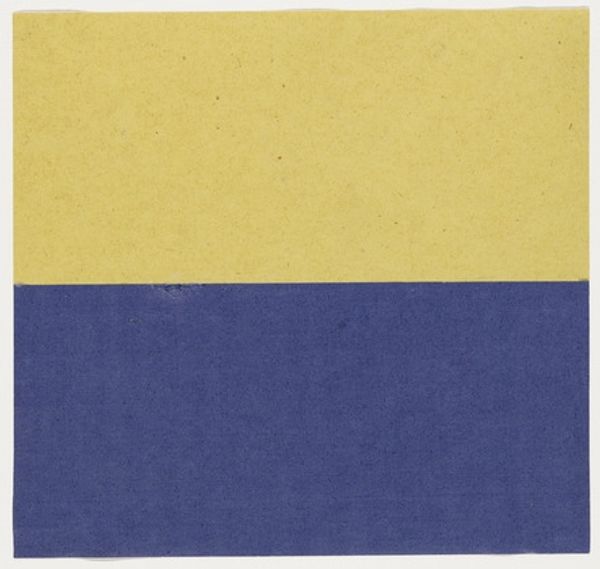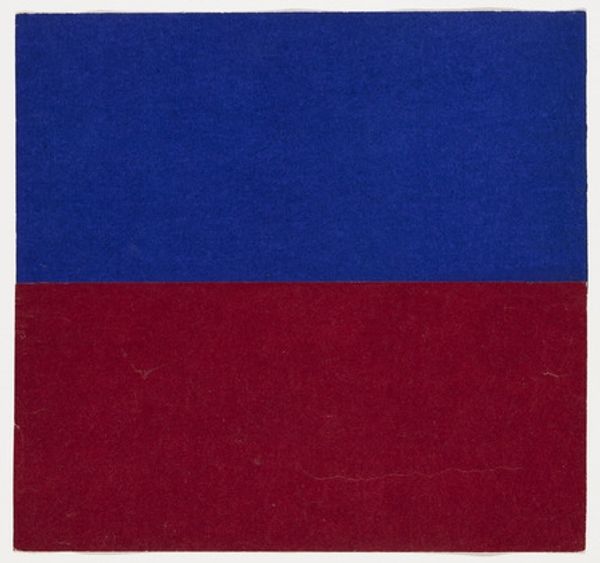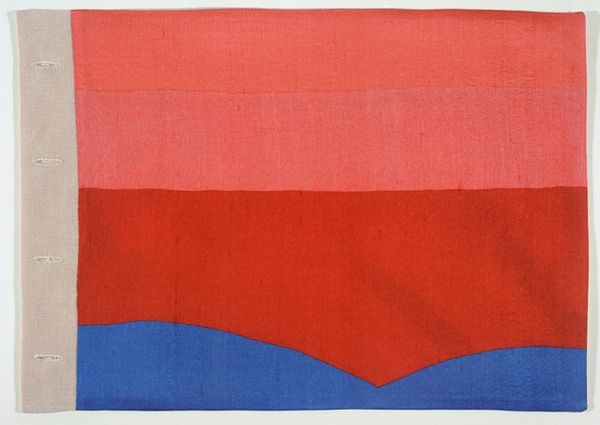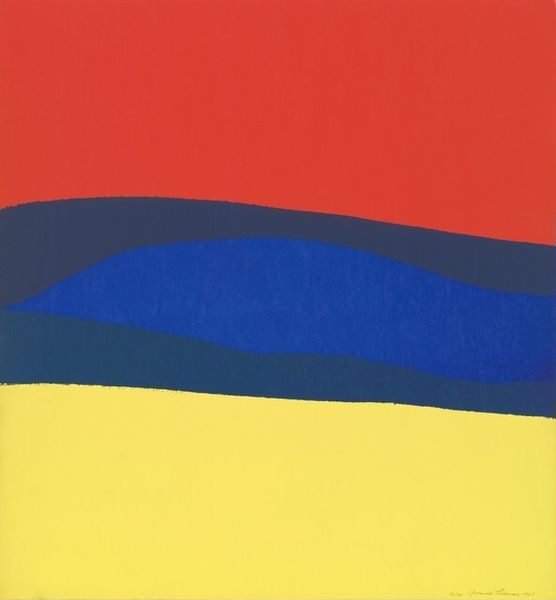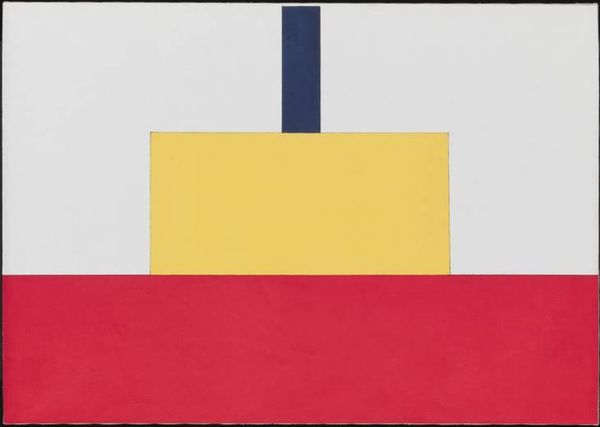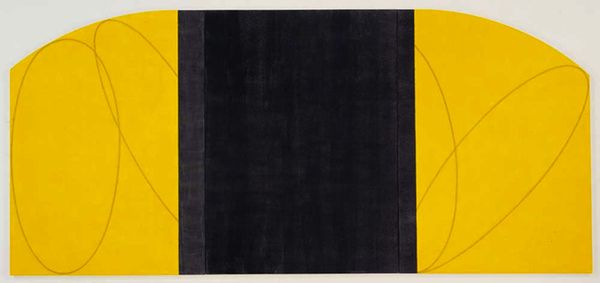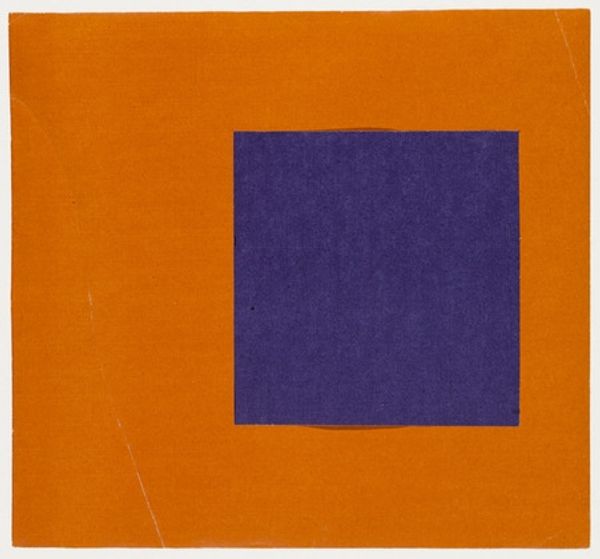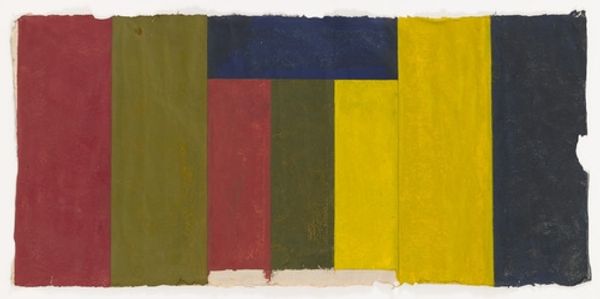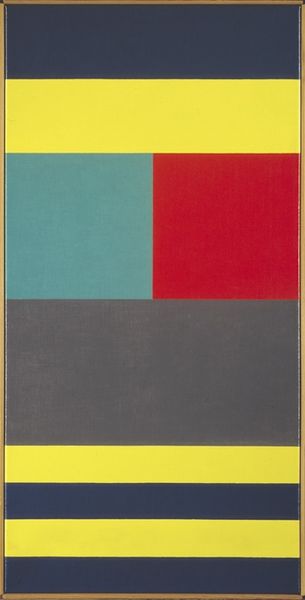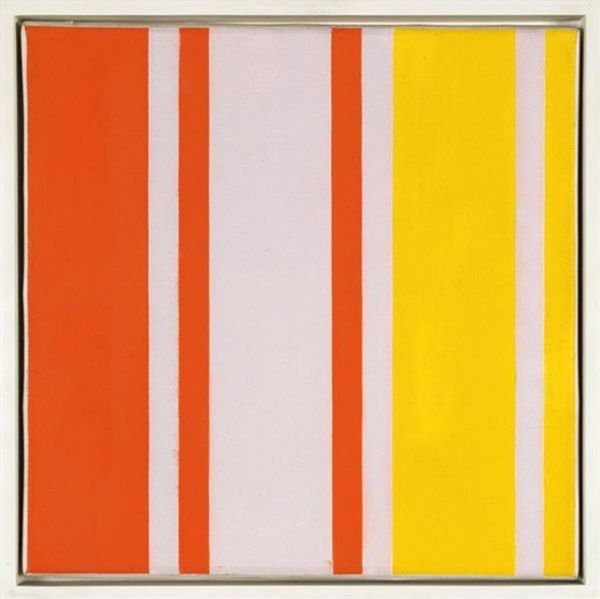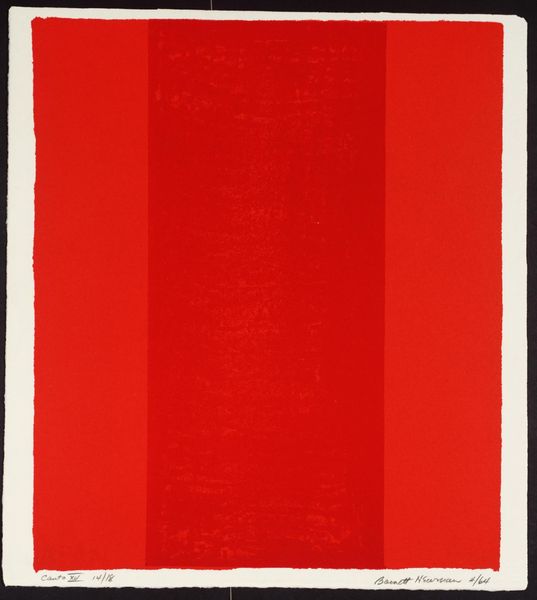
acrylic-paint
#
colour-field-painting
#
acrylic-paint
#
rectangle
#
geometric
#
vertical pattern
#
abstraction
#
modernism
Copyright: (c) Ellsworth Kelly, all rights reserved
Curator: Here we have Ellsworth Kelly’s "Red, Yellow, Blue," an acrylic-on-wood piece created in 1951. It’s one of his early experiments in pure abstraction. Editor: My initial response is a surprising calmness. The horizontal arrangement and the carefully balanced color weights bring a sense of equilibrium. The textures also seem almost tangible. Curator: These three colors are foundational. Each hue possesses its own psychological resonance; red often signals passion or warning, yellow symbolizes intellect and optimism, and blue is associated with calmness and stability. This piece brings forward the intrinsic meaning held within these pigments. Editor: Right. The simplicity belies a deeper engagement with form. See how the rectangles are perfectly stacked—yet they resist any sense of three-dimensionality. The colors themselves are flat, but each section’s interaction with the light creates an subtle dynamism. Curator: Precisely! Kelly was very intentional, inspired by everyday encounters that shifted the trajectory of art. This isn’t merely color; it’s the idea of color presented as itself, inviting meditation on primary relationships. Many critics felt that this kind of painting changed the ways in which artists looked at light. Editor: He's flattened experience to essential forms and hues, almost as an experiment in visual language itself. There's a rigor, even a boldness in its apparent simplicity, refusing the distractions of figuration. Curator: Looking back, I see how "Red, Yellow, Blue" provides a study in how potent simple shapes and elemental color palettes can be when distilled with this level of intention. It makes us wonder what the artist believed would have staying power for a society immersed in shifting currents of meaning. Editor: For me, analyzing the artwork really demonstrates the ways pure color and geometric forms challenge perceptions—how art can speak profoundly using its barest essentials. It provokes a fundamental awareness about looking and the very nature of pictorial space.
Comments
No comments
Be the first to comment and join the conversation on the ultimate creative platform.
